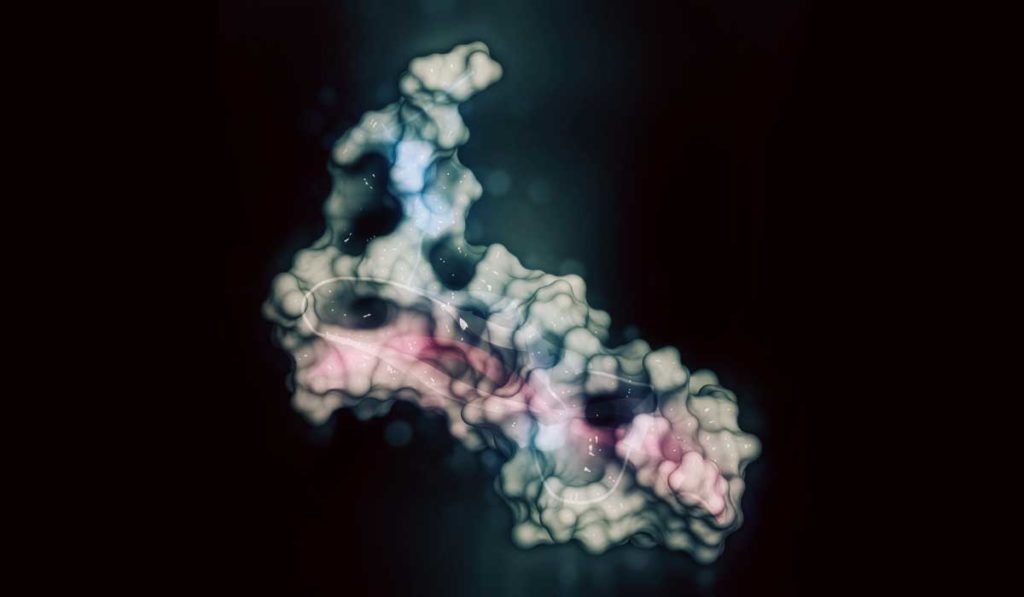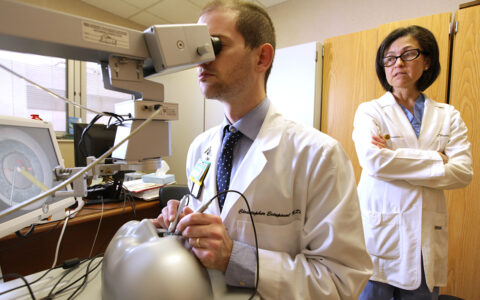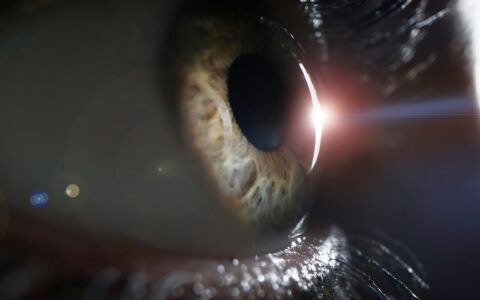Recent studies suggest that certain cells in the retinal pigment epithelium (RPE) possess regenerative potential. Enhancing their proliferation and, importantly, differentiation could further stimulate regenerative capacity. This may also help stave off irreversible RPE-related disease such as age-related macular degeneration (AMD).
Research at Vanderbilt University Medical Center is building on these findings to identify activation pathways and small molecules that might promote intrinsic, regenerative responses.
“Our aim is to identify the factors essential to achieving RPE regeneration,” said Sabine Fuhrmann, Ph.D., associate professor of ophthalmology and visual sciences, and cell and developmental biology at Vanderbilt. “By understanding the signaling pathways, we hope to identify pharmaceutical agents that can generate new RPE cells and reverse the progression of devastating eye diseases like AMD.”
“We hope to identify pharmaceutical agents that can generate new RPE cells and reverse the progression of devastating eye diseases like AMD.”
Mechanisms of RPE Regeneration
Current investigations focus on replacing RPE through stem cell-based methods, motivated by the limited regeneration capacity and self-repair properties of mature RPE. Several challenges remain. For example, long-term stability and survival of transplanted stem cell-derived RPE is a major concern. The goal of Fuhrmann’s research is to develop an alternative approach.
“It has been observed in some animal models, such as the zebrafish, that damaged RPE cells can grow back,” Fuhrmann said. “This doesn’t happen in a mammalian model. Typically, when you stimulate mammalian RPE cells combined with an injury, they make new cells, but they move out of the RPE layer and behave erratically. We want to stimulate the RPE to make new RPE cells but prevent the pathological behavior.”
The Role of Signaling Pathways
Researchers including Fuhrmann’s group have discovered specific pathways and factors critical for RPE differentiation and growth, including Hippo/Yap, Wnt/β-catenin, and Hedgehog. The Fuhrmann lab discovered that the Wnt/ β-catenin pathway is required in the mouse embryo to grow and differentiate the RPE. In a recently completed pilot study, Fuhrmann used a genetic mouse model to begin examining the role of these signaling pathways in RPE regeneration.
“Our research has identified factors essential to achieving RPE regeneration in a genetic mouse model,” said Fuhrmann. “In our new study, we plan to achieve first-time evidence of significant RPE regeneration in a non-regenerative mammalian model.”
Identifying Novel Agents
Fuhrmann’s new study, funded by Research to Prevent Blindness, aims to determine whether in vivo regeneration of damaged RPE can be achieved in a non-regenerative mammalian model by pharmacological modulation of the Wnt/β-catenin, Hippo and Hedgehog pathways. The group will test several small molecule agents that appear promising for regenerating RPE through the various signaling pathways.¹
“Our preliminary data strongly suggest that our proposed strategies are likely to be successful,” Fuhrmann said. “The potential translational impact of this research is very high.”





